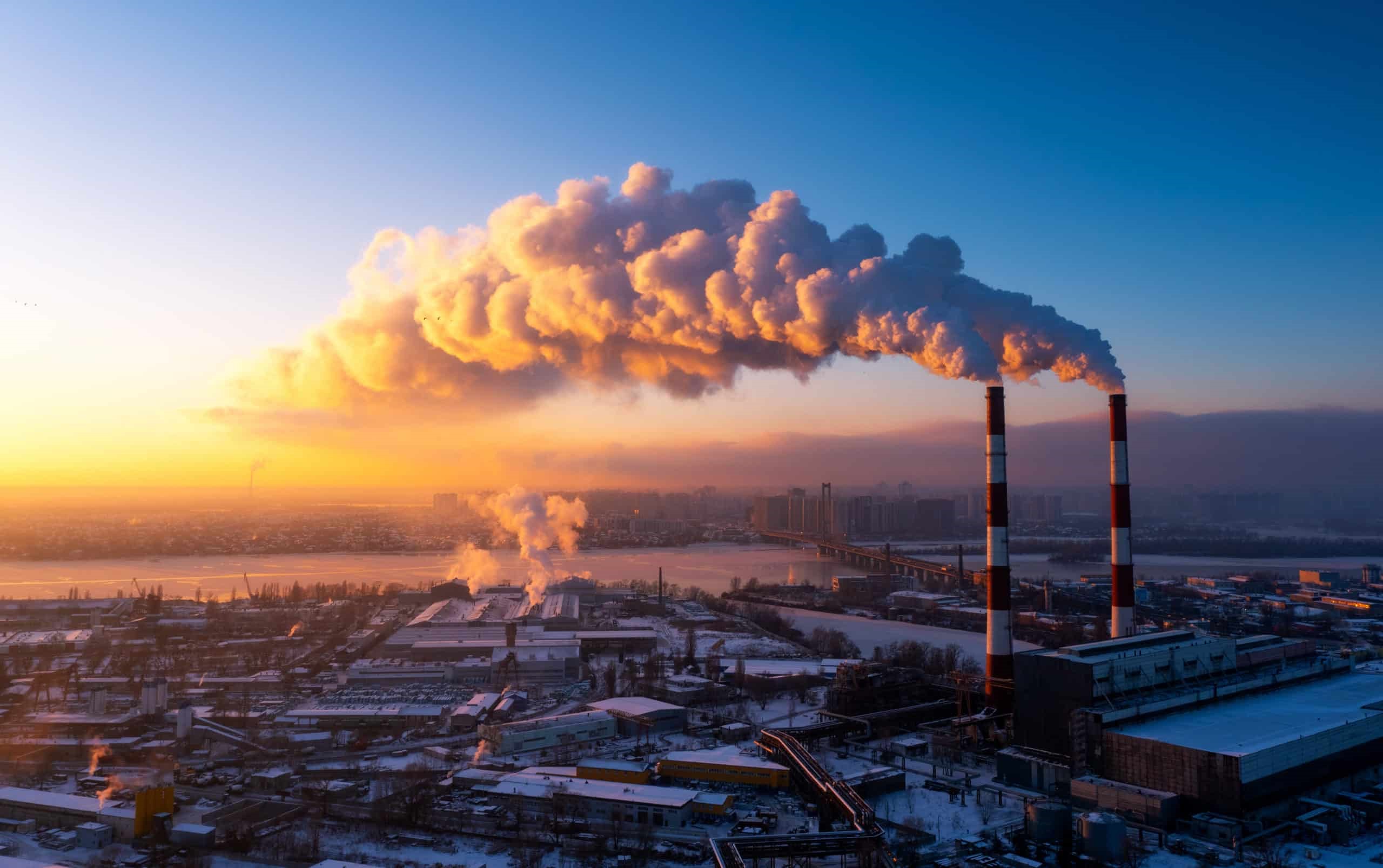Home>Science & Environment>Condensation Caused By Cryogen Use And Cold Temperatures


Science & Environment
Condensation Caused By Cryogen Use And Cold Temperatures
Published: February 19, 2024
Learn about the impact of cryogen use and cold temperatures on condensation. Explore the science and environmental effects. Gain insights and solutions.
(Many of the links in this article redirect to a specific reviewed product. Your purchase of these products through affiliate links helps to generate commission for Temperatures.com, at no extra cost. Learn more)
Table of Contents
Introduction
Cryogen use and exposure to cold temperatures can lead to the formation of condensation, a natural occurrence that can have various implications in scientific and industrial settings. Understanding the relationship between cryogen use, cold temperatures, and condensation is crucial for ensuring the safety and efficiency of processes involving these elements.
In this article, we will delve into the impact of cryogen use and cold temperatures on condensation formation. By exploring the effects of these factors and the causes of condensation, we can gain valuable insights into how to prevent and manage condensation in diverse environments. Whether in laboratories, manufacturing facilities, or outdoor settings, the interplay of cryogens, cold temperatures, and condensation presents both challenges and opportunities for innovation and problem-solving.
As we navigate through the intricate dynamics of condensation in the context of cryogen use and cold temperatures, we will uncover practical strategies for mitigating its effects. By addressing the underlying causes and implications of condensation, we can empower individuals and organizations to optimize their operations and maintain the integrity of their equipment and processes.
Join us on this enlightening journey as we unravel the complexities of condensation induced by cryogen use and cold temperatures, and discover the measures that can be implemented to minimize its impact. Let's embark on this exploration of scientific and environmental phenomena, and equip ourselves with the knowledge needed to navigate the challenges posed by condensation in various domains.
Understanding Cryogen Use
Cryogens, such as liquid nitrogen, helium, and argon, are utilized in a myriad of scientific, industrial, and medical applications due to their ability to maintain extremely low temperatures. These substances are crucial for preserving biological samples, conducting experiments in physics and chemistry, and facilitating the operation of superconducting magnets in magnetic resonance imaging (MRI) machines. The unique properties of cryogens enable them to support a wide range of cutting-edge technologies and research endeavors.
In scientific research, cryogens play a pivotal role in creating an environment conducive to studying the behavior of materials at ultra-low temperatures. This is particularly valuable in fields such as quantum mechanics, where the ability to manipulate and observe particles at near-absolute zero temperatures is essential for advancing our understanding of fundamental physical phenomena. Furthermore, cryogenic cooling is instrumental in enabling the operation of superconducting devices, which are integral components of particle accelerators and fusion reactors.
In the medical field, cryogens are utilized for preserving biological specimens, such as sperm, eggs, and embryos, in fertility clinics. The ultra-low temperatures maintained by cryogenic storage systems ensure the long-term viability of these biological materials, offering hope to individuals and couples seeking to conceive through assisted reproductive technologies.
Moreover, in industrial applications, cryogens are employed for their refrigeration and freezing capabilities. They are utilized in the food industry for rapid freezing of perishable products, as well as in the manufacturing sector for cooling materials during production processes. The versatility of cryogens in industrial settings underscores their significance in enhancing efficiency and product quality across various sectors.
The widespread use of cryogens underscores their indispensable role in advancing scientific research, medical treatments, and industrial processes. However, it is essential to recognize that the utilization of cryogens also introduces unique challenges, particularly in managing the associated risks and environmental impacts. As we delve deeper into the effects of cryogen use and its interaction with cold temperatures, we will gain a comprehensive understanding of the complexities involved in harnessing the potential of these remarkable substances while mitigating their inherent challenges.
Effects of Cold Temperatures
Cold temperatures exert a profound influence on the behavior of materials and systems, triggering a cascade of effects that can significantly impact their performance and stability. When exposed to extreme cold, substances undergo physical transformations that can manifest in diverse ways, ranging from changes in volume and viscosity to alterations in mechanical properties. In the context of cryogen use and industrial applications, the effects of cold temperatures are particularly pronounced, necessitating meticulous attention to the implications of low-temperature environments.
One prominent effect of cold temperatures is the contraction of materials. As the ambient temperature decreases, substances such as metals, plastics, and elastomers experience a reduction in volume, leading to dimensional changes that can affect the integrity of components and structures. This phenomenon is especially critical in engineering and manufacturing, where precise tolerances and dimensional stability are essential for ensuring the functionality and safety of products and machinery.
Furthermore, cold temperatures can induce alterations in the mechanical properties of materials, impacting their strength, ductility, and resilience. Metals, for instance, tend to become more brittle at low temperatures, rendering them susceptible to fracture and failure under mechanical stress. Understanding these changes in material behavior is crucial for designing components and structures that can withstand the rigors of cold environments, thereby enhancing the reliability and longevity of engineered systems.
In addition to the mechanical effects, cold temperatures can influence the flow characteristics of fluids, leading to changes in viscosity and flow rates. This has significant implications for the operation of hydraulic systems, lubrication mechanisms, and fluid transport processes, where the viscosity of oils, greases, and hydraulic fluids can be profoundly affected by temperature variations. Managing these fluid dynamics in cold environments is essential for ensuring the smooth and efficient operation of machinery and equipment.
Moreover, cold temperatures can impact the performance of electronic and electrical systems, affecting the conductivity and reliability of components such as semiconductors, batteries, and wiring. In cryogenic environments, electronic devices and circuits may exhibit altered behavior due to the low-temperature effects on semiconductor materials and electrical connections. Understanding and mitigating these temperature-induced changes is essential for maintaining the functionality and safety of electronic systems in cold environments.
By comprehensively examining the effects of cold temperatures on materials, mechanical systems, fluids, and electronics, we can gain a deeper appreciation of the multifaceted challenges posed by low-temperature environments. This understanding forms the basis for developing robust strategies to address these effects and optimize the performance and reliability of systems operating in cold conditions.
Condensation and Its Causes
Condensation, the process by which a substance transitions from a gaseous state to a liquid state, is a prevalent phenomenon in environments characterized by temperature differentials and humidity variations. In the context of cryogen use and exposure to cold temperatures, condensation can manifest as the formation of moisture on surfaces, equipment, and infrastructure. This accumulation of liquid droplets can have far-reaching implications, ranging from corrosion and electrical malfunctions to compromised product integrity and safety hazards.
The causes of condensation can be attributed to the interplay of several factors, chief among them being temperature differentials and relative humidity levels. When warm, moisture-laden air comes into contact with cold surfaces or environments, the air cools, leading to a reduction in its capacity to hold moisture. As a result, the excess moisture condenses on the cooler surfaces, giving rise to the formation of liquid droplets. This phenomenon is commonly observed in settings where cryogens are utilized, as the ultra-low temperatures of these substances create stark differentials with the surrounding environment, facilitating the onset of condensation.
Furthermore, the presence of porous materials, such as insulation and protective coatings, can exacerbate condensation by providing surfaces for moisture to accumulate. In industrial and scientific facilities where cryogens are employed, the design and composition of infrastructure and equipment play a crucial role in determining the susceptibility to condensation. Poor insulation, inadequate sealing, and improper ventilation can contribute to the buildup of condensation, posing challenges for maintaining the integrity and functionality of critical systems and components.
In addition to temperature and humidity factors, the thermal properties of materials and the duration of exposure to cold environments also influence the occurrence of condensation. Materials with high thermal conductivity can facilitate rapid cooling and condensation formation, while prolonged exposure to cold temperatures can exacerbate the accumulation of moisture, amplifying the associated risks and complications.
By elucidating the causes of condensation in the context of cryogen use and cold temperatures, we can gain valuable insights into the intricacies of moisture management and infrastructure design. Understanding the interplay of temperature, humidity, material properties, and environmental conditions is essential for devising effective strategies to mitigate condensation and its adverse effects, thereby safeguarding the reliability and safety of operations in diverse domains.
Preventing Condensation in Cryogen Use
Preventing condensation in the context of cryogen use necessitates a multifaceted approach that encompasses meticulous design considerations, strategic insulation techniques, and proactive moisture management strategies. By addressing the root causes of condensation and implementing targeted measures, it is possible to mitigate the risks and complications associated with moisture accumulation in cryogenic environments.
One fundamental strategy for preventing condensation involves the utilization of effective insulation materials and techniques. Insulating critical components, storage vessels, and infrastructure with materials that exhibit low thermal conductivity can minimize temperature differentials and inhibit the formation of condensation. Additionally, employing vapor barriers and moisture-resistant coatings can bolster the protective capabilities of insulation systems, reducing the likelihood of moisture ingress and condensation formation.
Furthermore, optimizing ventilation and air circulation in cryogenic facilities is paramount for controlling humidity levels and mitigating condensation. Implementing well-designed ventilation systems that facilitate the removal of moisture-laden air and the introduction of dry, conditioned air can help maintain optimal environmental conditions, thereby reducing the propensity for condensation to occur on surfaces and equipment.
In addition to insulation and ventilation measures, the strategic placement of moisture-absorbing materials and desiccants can aid in preventing condensation by actively capturing and retaining moisture within the environment. Incorporating these materials in proximity to sensitive equipment and areas prone to condensation can serve as a proactive defense against moisture-related issues, contributing to the preservation of equipment integrity and operational reliability.
Moreover, the adoption of robust maintenance practices, including regular inspection of insulation systems, detection of potential moisture ingress points, and prompt remediation of any compromised areas, is essential for sustaining the effectiveness of condensation prevention measures. By proactively addressing insulation degradation, sealant failures, and environmental changes, organizations can uphold the integrity of their cryogenic infrastructure and minimize the risks posed by condensation.
By integrating these preventive strategies into the design, operation, and maintenance of cryogenic systems and facilities, it is possible to establish a comprehensive framework for mitigating condensation and its associated challenges. Through a proactive and holistic approach to condensation prevention, organizations can enhance the safety, reliability, and efficiency of their cryogen utilization practices, paving the way for sustained innovation and progress in scientific, industrial, and medical domains.
Read more: Cold Snap Causes Window Crack Woes
Managing Condensation in Cold Temperatures
Managing condensation in cold temperatures requires a comprehensive understanding of the interplay between environmental conditions, material properties, and moisture dynamics. In cold environments, condensation can pose significant challenges, ranging from structural degradation and equipment malfunctions to safety hazards and operational disruptions. By implementing proactive measures and targeted interventions, it is possible to effectively manage condensation in cold temperatures, thereby safeguarding the integrity and functionality of critical systems and infrastructure.
One pivotal aspect of managing condensation in cold temperatures involves the meticulous design and selection of materials with inherent resistance to moisture accumulation. Utilizing moisture-resistant coatings, corrosion-resistant metals, and non-porous insulation materials can mitigate the propensity for condensation to form on surfaces and infrastructure. Additionally, employing thermal break technologies and moisture barriers can help minimize temperature differentials and inhibit the onset of condensation, bolstering the resilience of materials and systems in cold environments.
Strategic heat tracing and insulation systems play a crucial role in managing condensation by maintaining surfaces at temperatures above the dew point, thereby preventing moisture accumulation. By implementing heat tracing solutions in conjunction with effective insulation, organizations can mitigate the risks associated with condensation formation on critical components and infrastructure, ensuring the reliability and longevity of equipment in cold environments.
Furthermore, the integration of advanced moisture detection and monitoring systems enables proactive management of condensation by facilitating early identification of moisture-related issues. Deploying sensors and monitoring devices that can detect changes in humidity levels and moisture accumulation provides valuable insights into environmental conditions, empowering organizations to implement timely interventions and preventive measures to mitigate the impact of condensation.
In addition to these measures, the adoption of robust maintenance practices, including regular inspection of insulation systems, detection of potential moisture ingress points, and prompt remediation of any compromised areas, is essential for sustaining the effectiveness of condensation management efforts. By proactively addressing insulation degradation, sealant failures, and environmental changes, organizations can uphold the integrity of their infrastructure and minimize the risks posed by condensation in cold temperatures.
By integrating these proactive strategies and interventions, organizations can effectively manage condensation in cold temperatures, ensuring the reliability, safety, and operational continuity of systems and infrastructure in diverse environments. Through a holistic and proactive approach to condensation management, organizations can navigate the complexities of cold environments with confidence, fostering a culture of resilience and innovation in the face of moisture-related challenges.
Conclusion
In conclusion, the intricate interplay of cryogen use, cold temperatures, and condensation underscores the multifaceted challenges and opportunities inherent in scientific, industrial, and environmental domains. The utilization of cryogens, with their pivotal role in enabling cutting-edge research, medical treatments, and industrial processes, necessitates a nuanced understanding of the effects of cold temperatures and the implications of condensation formation. By delving into the complexities of these phenomena, we have uncovered valuable insights into the measures that can be implemented to prevent and manage condensation, thereby enhancing the safety, reliability, and efficiency of operations in diverse settings.
The comprehensive understanding of cryogen use and its interaction with cold temperatures has illuminated the significance of proactive measures in preventing condensation. From strategic insulation and ventilation techniques to the integration of moisture-absorbing materials and robust maintenance practices, organizations can establish a formidable defense against the adverse effects of condensation. By addressing the root causes of condensation and implementing targeted interventions, it is possible to mitigate the risks and complications associated with moisture accumulation, safeguarding the integrity and functionality of critical systems and infrastructure.
Moreover, the management of condensation in cold temperatures requires a holistic approach that encompasses meticulous material selection, strategic heat tracing and insulation systems, advanced moisture detection, and proactive maintenance practices. By integrating these proactive strategies and interventions, organizations can effectively navigate the challenges posed by condensation in cold environments, fostering a culture of resilience and innovation in the face of moisture-related challenges.
As we reflect on the complexities of condensation induced by cryogen use and cold temperatures, it becomes evident that a proactive and comprehensive approach is essential for mitigating the risks and complications associated with moisture accumulation. By empowering individuals and organizations with the knowledge and strategies needed to address condensation, we can foster a culture of resilience and innovation, ensuring the sustained progress and safety across scientific, industrial, and environmental landscapes. Embracing the complexities of condensation and its interaction with cryogen use and cold temperatures paves the way for transformative advancements and sustainable practices, shaping a future where the challenges posed by moisture dynamics are met with ingenuity and unwavering dedication to excellence.














